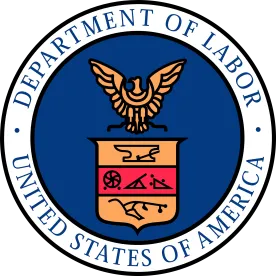The COVID-19 pandemic and the efforts to limit its spread caused a sudden and dramatic shutdown of large sections of the U.S. economy. Governmental shelter in place orders requiring non-essential businesses to temporarily close forced untold numbers of businesses to furlough or terminate most, and in many cases all, of their employees with little or no warning. For larger employers, mass layoffs and terminations of operations such as these, would normally trigger notification requirements under the federal Worker Adjustment and Retraining Notification (“WARN”) Act (as well as state WARN-type laws, where applicable).
Briefly, WARN requires employers to provide 60 days’ advance notice to affected employees, unions, and designated state and local governmental entities of a mass layoff or plant closing. The failure to provide required notice may, among other things, result in an employer’s obligation to pay employees for each missed day of notice. For the emergency shutdowns caused by the COVID-19 pandemic, however, providing such advance notice before furlough or layoff has been largely impossible, and as the shut-downs continue, may remain difficult for many months to come. In these emergent circumstances, many are asking: Does WARN apply now? Are there circumstances when an employer may be excused from providing WARN notice? When will a violation occur? What do I need to know about WARN?
To help answer questions such as these the U.S. Department of Labor has published WARN Act COVID-19 Frequently Asked Questions (“FAQs”), to provide guidance regarding employers’ WARN compliance obligations, employees’ rights and exceptions to the law’s notice requirements in circumstances such as the COVID-19 pandemic.
Of particular note, the FAQs remind employers of two significant provisions of WARN that may apply to a pandemic emergency shutdown, either excusing the employer from the Act’s notice requirements, or permitting less than 60-days’ notice.
First, the FAQs explain that a temporary layoff or furlough lasting less than six months is not counted as an employment loss under WARN. Thus, if employees are recalled to work within 6 months, no WARN notice is required at all.
Second, the FAQs discuss the “unforeseeable business circumstances” exception to WARN’s 60-day notice requirement. In short, the exception applies to mass layoffs and plant closings caused by business circumstances that were not reasonably foreseeable at the time that 60 days’ notice would have been required.
Of importance, “unforeseeable business circumstances” is not a true exception to the WARN notice requirement; rather it a defense employers may rely on to provide less than 60 days’ notice of termination. To avail itself of the defense, an employer must issue compliant WARN notices as soon as practicable, and must affirmatively invoke the exception with a short statement in the notice explaining how the business circumstance was not reasonably foreseeable, and that the circumstance was caused by some sudden, dramatic, and unexpected action or condition outside the employer’s control. The FAQs remind that the employer bears the burden of proving that the exception applies in any given situation.
The FAQs quote language from the WARN regulations that a government-ordered closing of an employment site that occurs without prior notice may be an unforeseeable business circumstance. The guidance does not, however, definitively state that the exception applies to all COVID-19-related layoffs and terminations, nor does it state that the COVID-19 pandemic suspends WARN notice requirements. Rather, the guidance cautions employers that they must remain mindful of their potential WARN obligations.
Thus, for example, the FAQs explain that even if an employer believes a WARN exception applies to a situation where WARN notice would otherwise be required, the employer must still provide employees, unions, and governmental entities with fully compliant notices, even if the notice is given less than the full 60 days in advance of the upcoming terminations.
Employers must also keep in mind applicable state WARN-type laws. These state laws vary and do not necessarily match WARN. For example, some state WARN laws do not have an “unforeseeable business circumstances” exception, and others do not have an exclusion for temporary layoffs lasting less than 6 months.
Thus, while the FAQs are a useful reference, in general, it is important to consult with knowledgeable employment counsel to confirm whether any significant reduction in force — temporary or permanent — implicates WARN, and that all appropriate steps are taken to ensure that any exception to WARN is, indeed, applicable.




 />i
/>i
